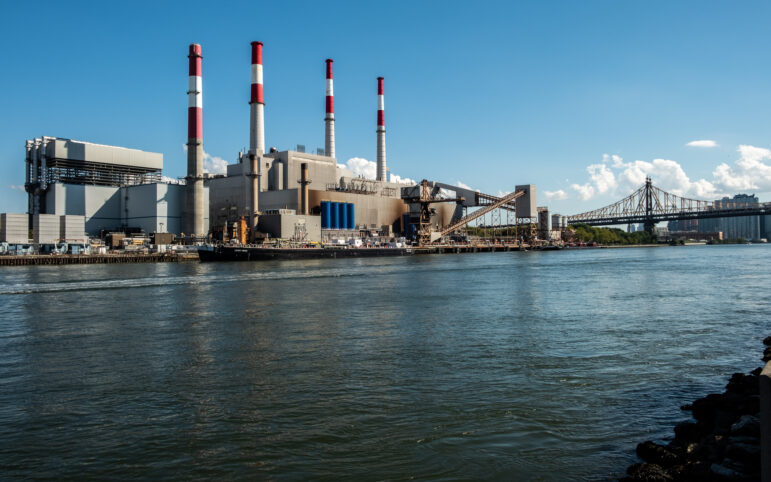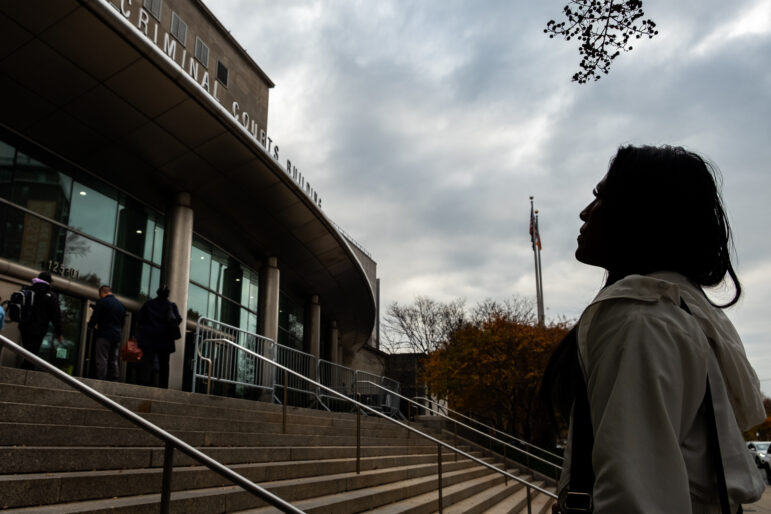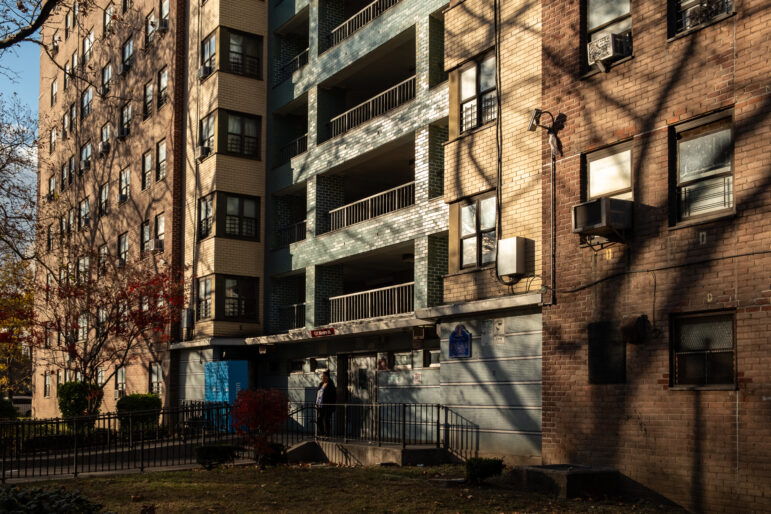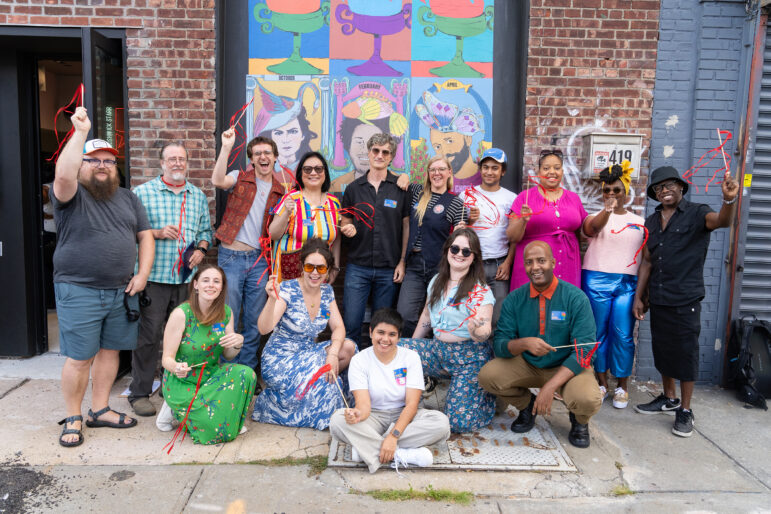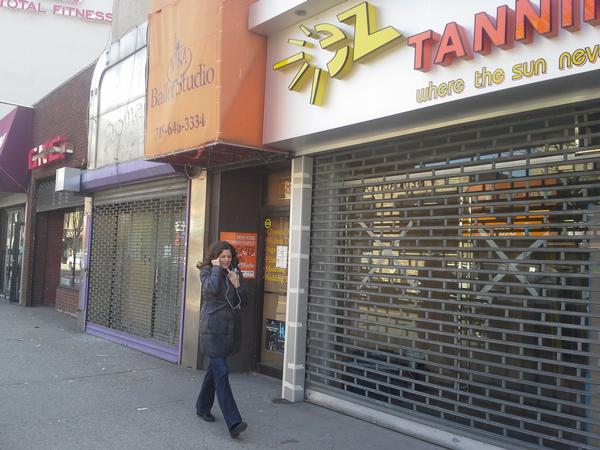
Photo by: Ross Barkan
On Emmons Avenue, roughly 85 percent of businesses suffered some form of damage. Smatterings of small businesses are reopening, but many will close for good after losing too many months of income and incurring too much storm damage.
Gokhan Karakollukcu never imagined that the placid waters beyond Emmons Avenue would blast apart his café’s windows one late and horrifying October night last year.
“We lost everything, whatever you see is new,” says Karakollukcu, gesturing to the interior of the Sheepshead Bay café he manages. “We found our furniture two or three blocks ahead…. My boss couldn’t open the front door the next day because there was so much water.”
Nearly five months after Hurricane Sandy ravaged New York City, residents and business owners are still struggling to rebuild their lives, both economically and psychologically. Neighborhoods like Breezy Point, Coney Island and the Financial District have become symbols of Hurricane Sandy’s ferocity, but one Brooklyn neighborhood believes it has been left out of the disaster narrative. Sheepshead Bay, named for the small south Brooklyn bay that it borders, was home to a thriving if overlooked business community on the eve of Sandy’s arrival last year. Ethnic restaurants, night clubs, shopping centers and glimmering condominiums were springing up along the waterfront on Emmons Avenue. Sandy stopped Sheepshead Bay’s economic renaissance, powered by an influx of Russian, Chinese and Turkish immigrants, dead in its tracks.
Sidewalks, once bustling, are now nearly empty. “For Rent” signs and boarded-up windows extend from Emmons Avenue to Sheepshead Bay Road, where bay water managed to surge inland for several blocks past the Belt Parkway. A smattering of small businesses are reopening, but many will close for good after losing too many months of income and incurring too much storm damage. Debt, after the salt water, has drowned much of Sheepshead Bay’s small business community. By one estimate, a whopping 40 percent of the almost 100 businesses in the areas of Sheepshead Bay impacted by Sandy may not be able to reopen. On Emmons Avenue, roughly 85 percent of businesses suffered some form of damage.
Karakollukcu, the manager of Masal Café & Lounge on Emmons Avenue, is actually lucky. Though he estimated business is down as much as 40 percent, he at least has been able to reopen the Turkish café after it was closed for two months. Lacking flood insurance and unable to secure a small business loan from the U.S. Small Business Administration, Masal was left to pay for the roughly $200,000 in damage out of pocket, borrowing from associates. The spacious café’s walls, windows, floors and furniture needed to be replaced and its electric infrastructure required an extensive overhaul. After the storm, Masal did not have power for three weeks.
Being reopened, however, is just the beginning of the battle for business owners. Declining foot traffic resulting from the shuttering of neighboring businesses may mean the boom times of Sheepshead Bay will remain a memory. Peter Katsichtis, the owner of the Greek restaurant Yiasou—a block away from Masal—reopened after suffering $150,000 in storm damage and receiving a $25,000 loan from SBA. He says business is down 25 percent from a year ago.
“We want people to know we are open for business again,” Katsichtis says.
Scary After the Storm
Alex Tsirulnikov sees perhaps one upside of Sandy’s devastation. Traffic police haven’t bothered as many illegally parked cars on Sheepshead Bay Road’s business strip.
“Business-wise, this area was always alive. There were a lot of people going every day back and forth between the train stations and bus stations,” says Tsirulnikov, the president of Infinite Auto Leasing on Shore Parkway. “Really, it was scary after the storm. It was completely shut down. It’s different, it’s totally different now. Traffic police don’t even come here anymore. It’s like they’re giving us a break, not to give tickets.”
Representative of the entrepreneurial immigrant class that helped power Sheepshead Bay’s economy over the past decade, Tsirulnikov—whose business suffered about $35,000 in damage—feels abandoned. Though floodwaters essentially destroyed Infinite’s offices, he says his landlord wouldn’t allow him or other tenants to defer rent in the wake of the Sandy. A recent meeting organized by the Brooklyn Chamber of Commerce for struggling businesses at the nearby El Greco Diner, an ornate neighborhood institution that managed to reopen, didn’t offer business owners, in his view, any solutions.
“I don’t know with Sheepshead Bay, I don’t see anyone helping businesses, I don’t see it,” Tsirulnikov says. “What is it, the chambers that they have here—they’re not really helping anybody, they didn’t do nothing. There was garbage out on the streets here for months.”
The Brooklyn Chamber of Commerce says it has been working to encourage more people to come shop in Sandy-stricken communities. They are optimistic that in the spring and summer month business will pick up in Sheepshead Bay.
“For the most part, the neighborhood is in the recovery phase,” said Clemente Lisi, the director of communications and marketing at the Chamber. “The struggle is, a lot of family businesses that have been open for years and years are looking at their own personal books and asking: Is it worth reopening? A lot of them are thinking, ‘I’m in a flood zone, this could happen again.’ But a lot of them are open because it’s their livelihood.”
Small Business Loans Are Scarce
While some business owners like Katsichtis managed to secure SBA loans, many small businesses in the Sheepshead Bay area failed to for a variety of reasons. The loan process, described by some as too arduous, hinges on showing a certain amount of savings that can demonstrate to SBA that the business is capable of repaying the loan. For start-ups, family-owned and immigrant businesses, savings are usually in short supply. In immigrant-rich Sheepshead Bay, where many first-generation businesses do not have significant cash reserves, loans were hard to come by. For businesses already operating on a tight budget, the idea of taking on more debt, even if interest rates are held to as little as 4 percent, is an upsetting proposition.
As a result of Sandy, 67 business disaster loans were approved for a total of $6,288,500 within the 11235 zip code, which includes Sheepshead Bay, Manhattan Beach and Brighton Beach, according to SBA. The average loan given out was $93,858 but only 34 percent of loans were approved. In Kings County overall, 32 percent of loans were approved.
“We know the turndown rate from SBA has been very high,” says Marilyn Gelber, president of the Brooklyn Community Foundation, a nonprofit organization that has been distributing grants to storm-ravaged communities in Brooklyn (and a funder of the Brooklyn Bureau). “The cash flow that people show didn’t seem to justify these loans from SBA. But you have to realize, though, a lot of these are small start-ups and they’re not that sophisticated about the kind of documentation that you need to show that you really can afford to pay back these loans. And frankly, these were loans, so getting into greater debt when your business is working on the margin…is tough.”
A unified community?
What Gelber and other nonprofit organizers have found is that Sheepshead Bay lacks the civic infrastructure of nearby neighborhoods like Gerritsen Beach or Coney Island, making the neighborhood’s recovery all the more daunting.
Sheepshead Bay doesn’t have an organization on the scale of the Alliance for Coney Island, a partnership between the city and Coney Island’s business community, or Gerritsen Beach Cares, a large yet tightly-bound civic group. Theresa Scavo, the chair of Community Board 15 which includes Sheepshead Bay, said business owners in recent years rejected the idea of forming a Business Improvement District (BID), a place where business owners pay an additional tax to fund improvements within the district boundaries. While BIDs have been criticized for pricing out small businesses unable to pay the tax, they are often the hallmark of a cohesive business community. Bay Ridge, less than 10 miles down the Belt Parkway from Sheepshead Bay, has two BIDs.
“You have to remember this is a very diverse community,” Scavo says. “It’s extremely diverse. You have business owners who are Russian and Turkish and Chinese. It’s very difficult to get a group together that all want to share the goal of getting more business to Sheepshead Bay.”
That recent meeting at the El Greco Diner, Scavo says, drew few business owners. Without connections forged through many decades of working together, immigrant business owners in the area, recovery organizers suggest, are more likely to work alone.
“You have really diverse cultures, we live side by side, but it’s very hard to be organized and stay on the same page even when there’s no disaster,” says Ken Soloway, the associate executive director of the Kingsbay Y. “None of them talk to each other, they don’t know each other, they don’t work together.”
But Ned Berke, the founder of the news blog Sheepshead Bites, disagreed with the notion that uncooperative immigrant communities are a cause of Sheepshead Bay’s aching recovery. Plumb Beach, home to what Berke called “Sheepshead Bay stalwarts,” is not an immigrant community yet it has had an equally tough time recovering from Sandy, Berke argued. He also pointed to nearby Brighton Beach where immigrant communities, with the help of strong civic organizations and a BID, were able to implement a more efficient recovery effort.
“Brighton Beach is a much more diverse community in terms of the immigrant groups and how packed together they are,” Berke says, ticking off Eastern Europeans, Arabs and South Asians as examples of immigrant groups that live side by side. “The diversity did not cause a problem for their ability to respond to the storm. In fact, (Brighton Beach) might’ve actually done better because they already had these institutions that are serving them, such as the Shorefront Y, and along Brighton Beach Avenue they had a much faster recovery in their business sector because of a Business Improvement District.”
The Sheepshead Bay-Plum Beach Civic Association, Berke noted, just met for the first time in 2013.
Hope in federal aid
For struggling business owners in south Brooklyn, salvation may lie in the Federal aid that is just beginning to be disbursed to New York City.
In the first round of allocations, the city received $1.8 billion in Community Development Block Grants. $185 million has been allocated for business recovery programs, $100 million of which will provide grants to up to 1,300 businesses.
Eighty-million dollars has been earmarked for expedited low-interest loans and grants of up to $150,000 to as many as 1,000 businesses.
According to the U.S. Dept. of Housing and Urban Development, loans will be made available for small businesses that failed to secure an SBA loan. In a March 15 document, HUD classified the number of businesses unable to secure an SBA loan as one of several “unmet needs.”



